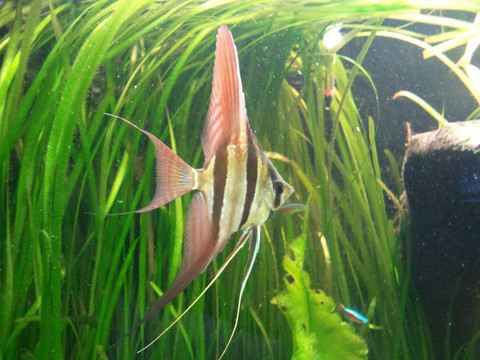 Loading... Please wait...
Loading... Please wait...- Home
- Freshwater Fish
- Exotic Tropical Fish
- Pterophyllum altum (Altum Angel) 13cm L 25cm H
Pterophyllum altum (Altum Angel) 13cm L 25cm H
Product Description
Pterophyllum altum
Altum Angel
Cichlidae. Subfamily: Cichlasomatinae
Native to Colombia and Venezuela, where it occurs in the upper Rio Negro and tributaries of the upper Rio Orinoco including the Rio InÃrida and Rio Atabapo.
7 inches long, 10 inches deep (including finnage).
Provide a densely planted, well covered aquarium with floating plants and broad-leafed plants to help dim the lighting in the Altum’s aquarium. Simulate the Deep Angel’s habitat too, with bits of wood (mopani, driftwood, bogwood – specifically roots) as overhanging branches. Provide a soft substrate (either sand or a fine gravel) as Altums may dig. Make sure there isn’t a great amount of water flow in the aquarium as Altum Angels specifically enjoy very slow flowing rivers.
Temperature: High temperatures – 82 to 90°f (28 to 32°c)
pH: 4.8-6.2. It will not usually do well at all in less acidic conditions.
Hardness: 0-5°H. Soft water with virtually undetectable hardness is mandatory when keeping this species.
As with their more common relatives (Angelfish – Pterophyllum Scalare), anything which can fit in the Altum’s mouth is “fair game”. This includes Neon Tetras, Guppies, Pygmy Rasboras and the likes. Be careful with respect to smaller fish in an Angel’s aquarium, though they are fine with other peaceful, larger fish.
Difficult to sex. Males will develop a smaller version of the well known Cichlidae nuchal hump, but usually only around breeding time.
Breeding can be very difficult with Altums. Contrary to many profiles on the Internet, Altums have been bred in captivity without artificially raising the fry. Very acidic, soft water is required to breed Altums. Growing up a group of 6 young Altum generally has a good change of finding a breeding pair. Once the pair have bonded, spawning may begin. If you find that the spawns are being eaten by the parents, you may have to artifically raise the fry in a small tank. If this is the case, assist the fry by placing 8 drops of methylene blue for every 5 gallons of water in the fry-raising tank. After the fry become free swimming, start to replace some of the water in the fry-raising tank with RO water.




